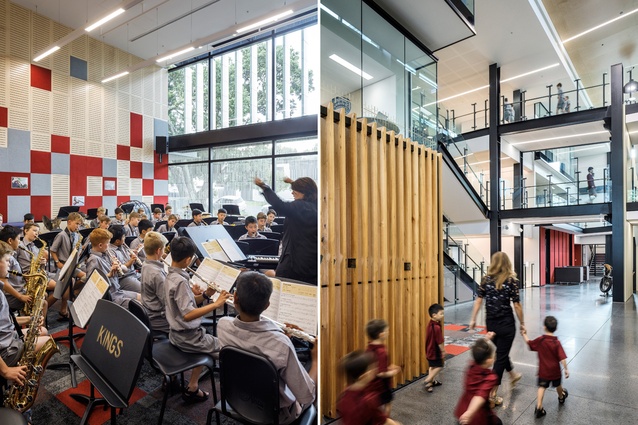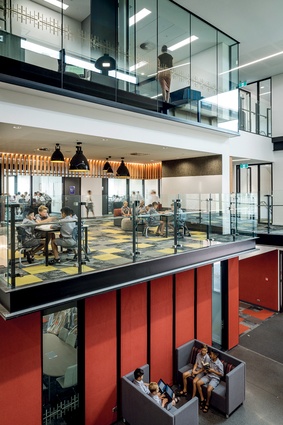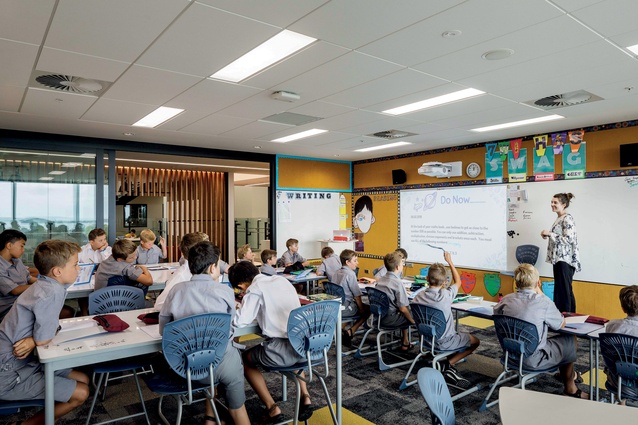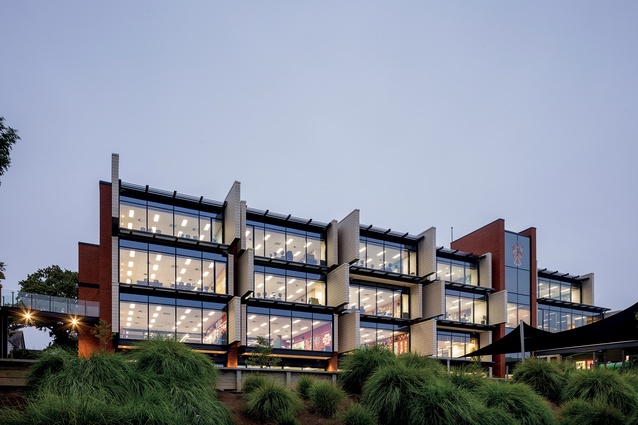A learning environment for future needs
Amanda Harkness visited King’s School’s new Centennial Building and found it to be the ideal space for learning and interacting, while it prepares students for the world of university facilities and contemporary workplaces.
“Of all the projects an architect can be asked to design, none can be more interesting and challenging than a school.” The words of University of Sheffield Professor Emeritus of Architecture, Bryan Lawson, no doubt resonated with architects from Warren and Mahoney when they were tasked with designing the new Centennial Building for King’s School in Auckland.
Located at the heart of the school’s campus on the corner of Remuera and Portland Roads, the $30-million project needed to fulfil multiple requirements but core to the brief was the importance of human relationships within a school environment, particularly those between students and teachers.
On the face of it, the new 5000m2 facility provides large, light-filled classrooms, music studios and discussion areas, with wide, soundproofed corridors easing the transition of large throngs of students at bell time.

But look a little more closely and you’ll see that the architects have created spaces designed to stimulate and extend students and to encourage purposeful interactions with their teachers. Each classroom is square, signalling no obvious ‘front’ or ‘back’ of the class, with the smallest room at 80m2 and the largest, a generous 110m2.
Custom-made furniture was up to two years and 10 prototypes in the designing with Furnware, and includes different desk and seating types and heights for various task work or according to preference. “We have the ‘meerkats’, who like the high seats and tables,” says Headmaster Tony Sissons, “and, given boys like to move, we made sure to build flexibility into our chairs, especially the backs.”
In each room, the teacher stands at a circular mobile teaching station with a writable surface, which can be variously used as a lectern or whiteboard and is moved easily around the classroom. The traditional teacher’s desk sits in a nook with its back to the class: to be used after hours only.
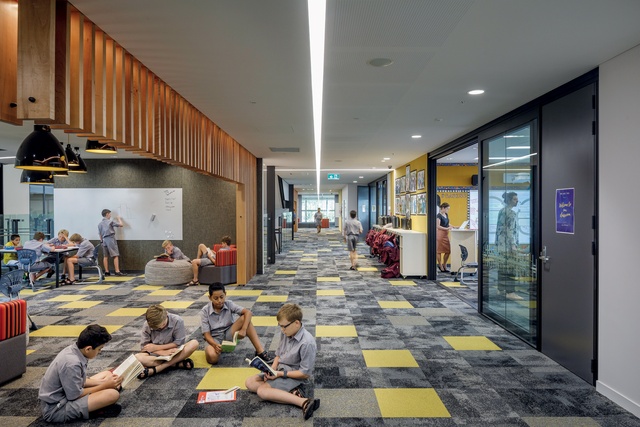
Individual classrooms flow into open, flexible spaces, which encourage collaboration with others while, at the same time, allow for more-intimate areas for individual and reflective learning. The carpet colourway is different on each level of the four-storeyed building: green on the ground level, maroon at entry level, gold on the next floor up and blue at the top. The younger students, particularly, find this colour-coding helpful for wayfinding.
Working with Michael Morrow of Marshall Day Acoustics, the design team incorporated a range of broadband and tuned absorptive panels to make up the wall finishes, providing visual interest as well as a balanced reverberation time, which is ideal for music practice and performance.

The boys were invited to make suggestions at the planning stage for mandatory inclusions;
the results, perhaps not surprisingly, included a Lego table, a large fish tank and a coffee machine “for the teachers”.
While, physically, the new 5000m2 building connects existing Lighthouse, Kerridge and Harrison Blocks, the design also had to connect the past and future of King’s School. “The end result replicates the real world of university facilities and contemporary workplaces,” says Warren and Mahoney project lead and chairman, John Coop.
Indeed, the use of space, materials and finishes would rival any world-class, new tertiary education or corporate build but it is the connections to the past that bring smiles to the faces of those who use the building. Built on the site of the former Hanna Block, which was found to have serious structural problems following an earthquake engineer’s report, the building pays homage to its predecessor throughout. The restored Hanna clock hangs in the atrium stairwell, an oversized chessboard is built from the old trusses and the fins of an internal ‘street’ are also made with recycled Hanna timber.
The Centennial Building, undoubtedly, would have proved a challenging project for its architects but, ultimately, their sensitivity to the student–teacher relationship was paramount in its realisation and this will be to the benefit of all for the next century of learning.


